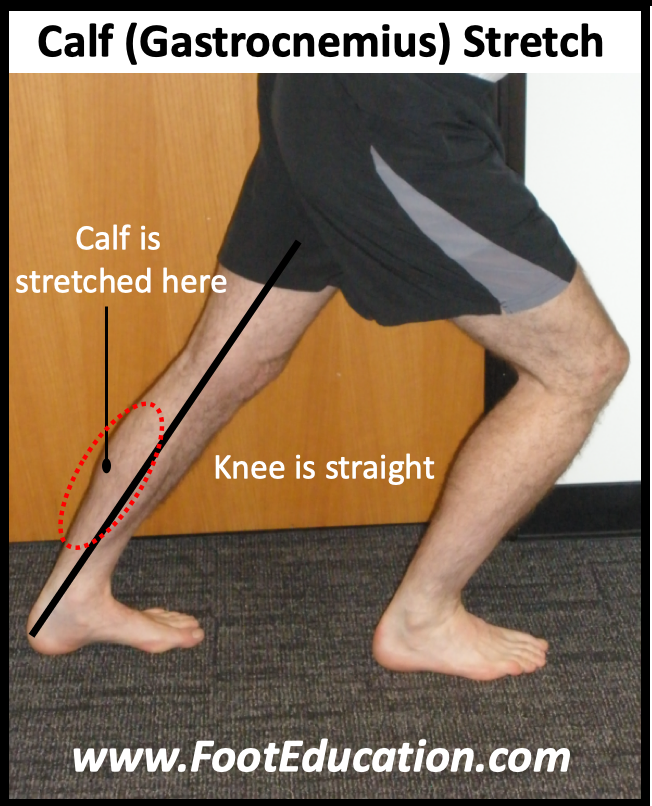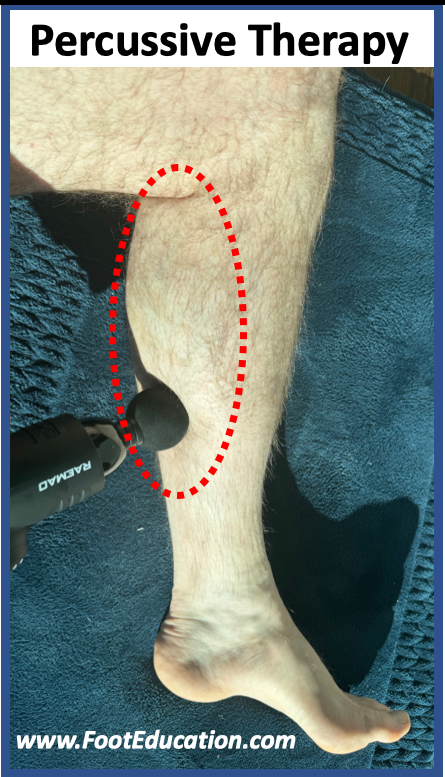Recovery and Rehabilitation Following a Calf Muscle Tear
Imagine you are playing pickleball (or tennis, basketball, soccer, etc.). You race for the ball, suddenly changed direction –and immediately feel a sharp intense searing pain in your calf muscle. You have suffered a calf muscle tear -also known as a calf strain! You gingerly limp to the sidelines. Your game is over, and you now have weeks (or months) of calf muscle rehabilitation ahead of you. The good news is it is not an Achilles tendon rupture!
The calf muscle has two primary muscles, the soleus and gastrocnemius These muscles joint together to form the Achilles tendon which in turn attaches to the heel bone (the calcaneus). A calf muscle tear results in local disruption of some of these muscle fibers. The muscle injury is often in the lower inside part of the calf muscle. However, tearing the calf muscle fibers can occur anywhere. Bleeding at the injury site where the muscle fibers are torn will result in bruising, although sometimes it can take a few days for this bruising to appear.
To obtain optimal recovery following a calf muscle injury require three goals to be achieved.
- 1) the torn calf muscle needs to heal;
- 2) the strength of the muscle needs to be regained; and
- 3) the flexibility and resiliency of the calf muscle must be optimized.
These are competing goals. Healing often requires immobilization, limiting activities, and protection of the injured area. However, inactivity and limited functioning of the calf muscle very quickly results in atrophy and stiffness. So, how do we balance these goals to achieve an optimal recovery and rehabilitation following a calf muscle tear?
Function of the Calf Muscle
To understand the optimal recovery strategy following a calf muscle tear it is helpful to understand how the calf muscle functions. The calf muscle contracts repetitively with each step we take. Specifically, this contraction controls our bodyweight as it passes over our foot during walking or running. This means the calf muscle is contracting eccentrically – the muscle contracts while at the same time lengthening. This eccentric muscle contraction generates considerable internal force within the muscle. This force is even greater when the activity is dynamic, such as during running or suddenly changing direction. This is why it is often a sudden change of direction maneuver that causes a calf tear or an Achilles tendon rupture. It’s also why the calf muscle needs to be very strong. In addition, the calf muscle is contracting with each step. We take for granted that our calf muscles will be able to contract thousands of times each day -once for every step we take. This muscle function requires stamina and resiliency.
Healing a Muscle Tear
The healing process following a calf strain initially involves local bleeding around the torn muscle tissue. This bleeding clots, forming a strawberry jam like confluence around the torn muscle fibers. Over time, bruising resorbs and the healing blood clot transforms into scar tissue. Initially, the scar tissue may be rubbery and lumpy. As it gets stronger, it will tend to smooth out. However, excessive force at any time during this recovery period can cause a re-tearing or breakdown of the forming scar tissue causing a slowing of the recovery process –or even requiring the healing process to start again. Therefore, protection of healing scar tissue with relative immobilization is critical. It may mean markedly limiting activities, or using a cast or walker boot if the muscle tear is significant enough.
Balancing the Rehabilitation Process Following a Calf Strain
The recovery challenge following a calf muscle tear occurs once the acute pain of the injury has settled somewhat. This can be a few days to a few weeks after the injury. At this point, patients can begin to mobilize more and the rehabilitation process can start in a formal way. A good recovery requires patients to balance their rehabilitation between doing too little –and doing too much. Doing too little means the calf muscle will continue to atrophy. Doing too much means the calf muscle can re-tear, aggravating the injury and slowing the recovery.
The hallmark of a good rehabilitation following a calf strain is a graduated approach – and a continuation of the exercises until full strength and function of the calf muscle has been achieved. Optimal rehabilitation of a calf muscle tear often takes many months. Rehabilitation of a calf muscle tear can be thought of in terms of regaining: 1) muscle strength; 2) flexibility, and 3) dynamic functioning.
Calf Muscle Strengthening
Muscle strength can be built with graduated resistance. Initially, this may simply be firing the calf muscle by pointing the toes. Progressively more resistance can be added with resistance bands, leading to double leg heel rises, and eventually to single leg heal rises. The calf muscle needs to contract thousands of times a day, so it’s important to do this strengthening program employing high repetition strengthening exercises (ex. 3-5 sets of 20-40 repetitions). The key is gradual progression using the opposite leg as a comparison.
Calf Muscle Stretching
The healing calf muscle tissue must also be stretched and made more resilient. A graduated stretching program should be undertaken on a daily basis. While the calf can be stretched both with the knee bent and the knee straight. It’s important to emphasize stretching the calf with the knee straight as this stretches the outer calf muscle, the gastrocnemius (Figure 1). The gastrocnemius muscle is usually the tighter of the two muscle and is often the part of the calf muscle that is injured. Stretching can be augmented by local massage or percussive therapy (Figure 2) to help loosen up the muscle tissue. Again, this stretching and massage of the muscle tissue needs to be done in a graduated manner often over many weeks.


Increasing Dynamic Loading
The last phase of recovery is the addition of dynamic loading. In addition to being used thousands of times a day while we walk or run our calf muscles also needs to be able to function dynamically –particularly in sporting activities that require a sudden change of direction. These motions place an enormous stress through the calf muscle. During the initial rehabilitation phases, and even after the calf seems “recovered,“ it may not be able to handle dynamic loading. Similar to strengthening and stretching, dynamic loading should be progressed gradually. The introduction of skipping, and eventually dynamic jumping exercises should be added in a graduated manner. These dynamic loading exercises should be increased very gradually over a number of weeks until the calf function is at least equivalent to the opposite side.
To obtain a full recovery following a calf muscle tear can take many months. However, it is worth being diligent in your recovery to regain full strength, flexibility, and dynamic power. This will allow an easier return to sport, with a lower likelihood of a calf muscle re-tear.
February 19th, 2024